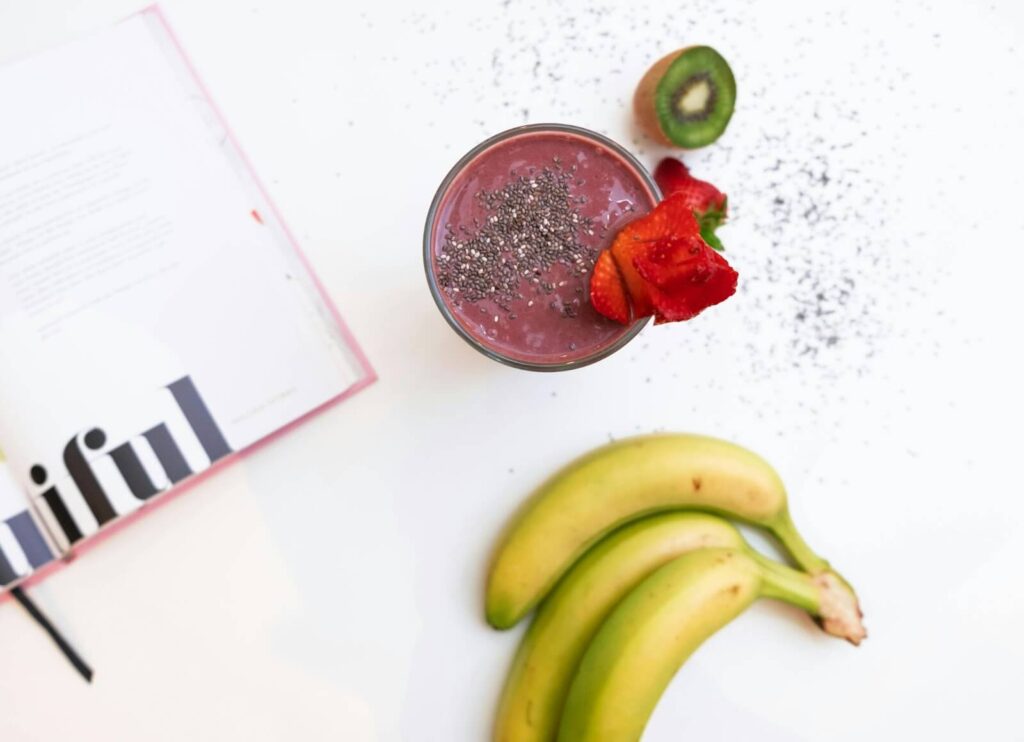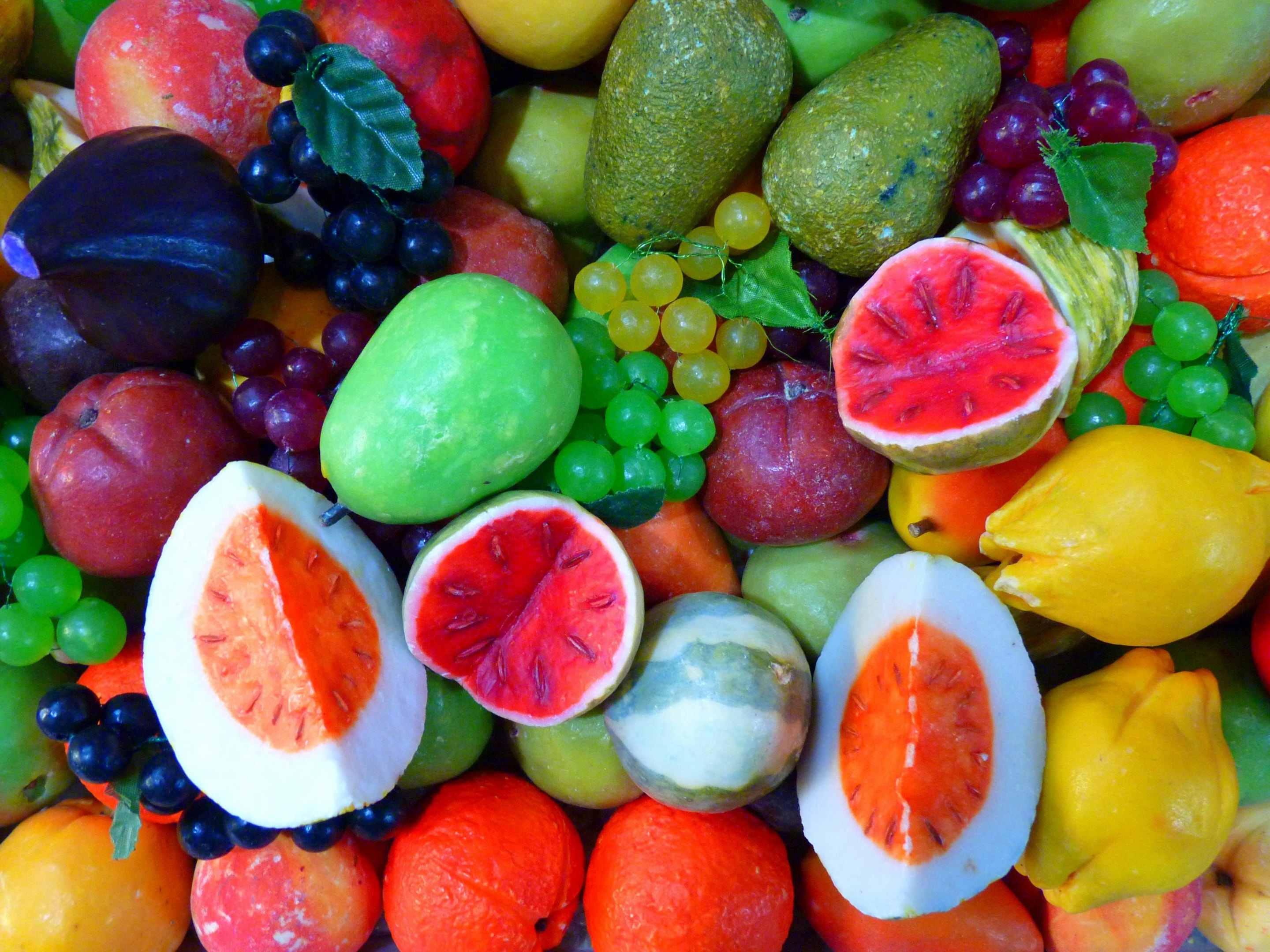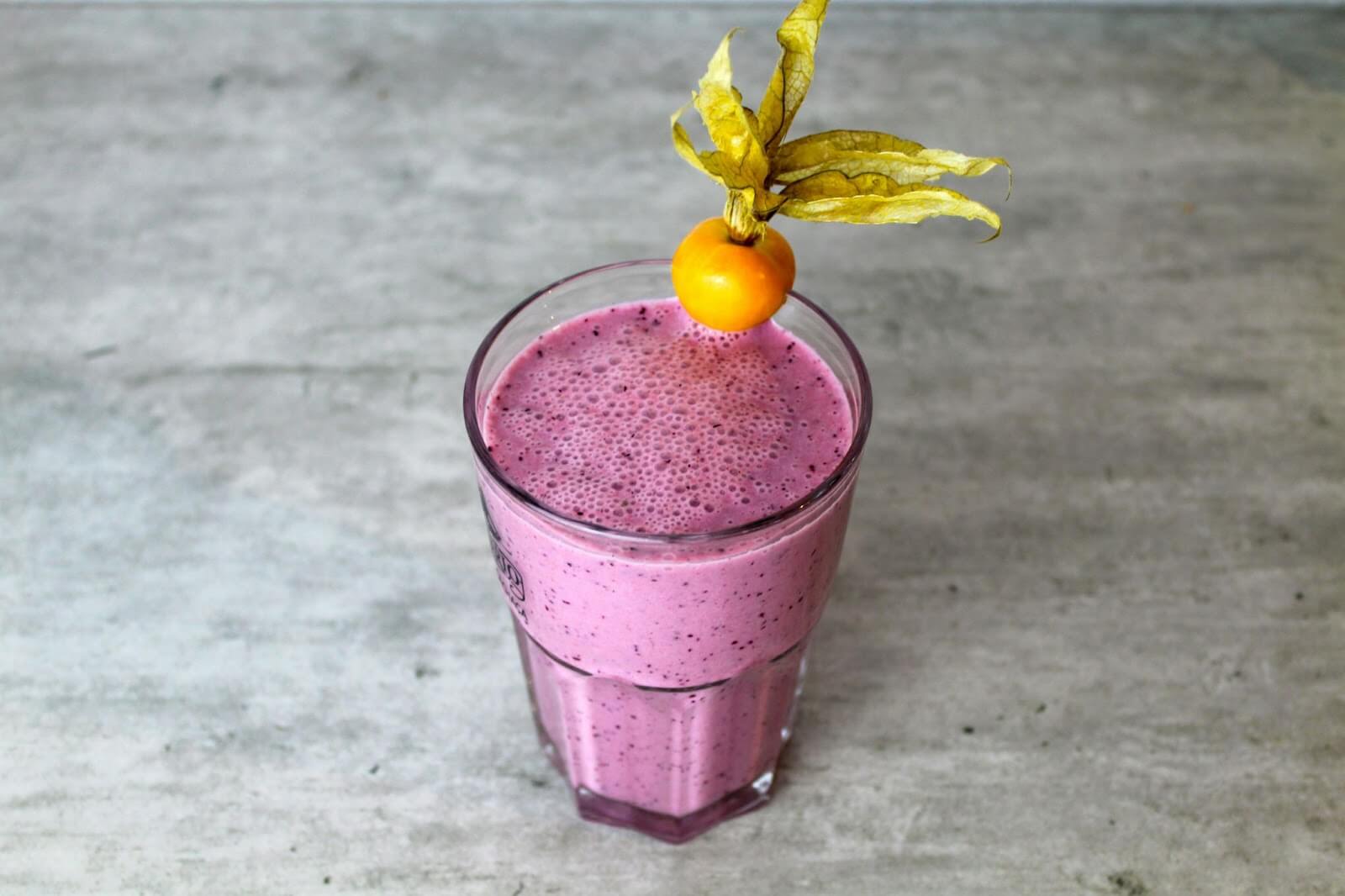High blood pressure can be naturally lowered by consuming smoothies packed with ingredients rich in potassium, magnesium, and antioxidants, which help relax blood vessels and improve circulation.
These nutrient-dense drinks, along with a balanced diet and lifestyle changes like regular exercise and stress management, can significantly contribute to healthier blood pressure levels.
What is High Blood Pressure?
High blood pressure (HBP) occurs when the force of blood against the walls of your arteries is consistently too high. According to the American Heart Association (AHA), blood pressure is categorized as follows:
- Normal: Less than 120/80 mm Hg
- Elevated: Systolic 120-129 mm Hg and diastolic less than 80 mm Hg
- Hypertension Stage 1: Systolic 130-139 mm Hg or diastolic 80-89 mm Hg
- Hypertension Stage 2: Systolic 140 mm Hg or higher or diastolic 90 mm Hg or higher
- Hypertensive Crisis: Systolic over 180 mm Hg and/or diastolic over 120 mm Hg (requires immediate medical attention)
Risks of Uncontrolled High Blood Pressure
Uncontrolled hypertension can damage vital organs, including the following:
- Heart damage: Hypertension increases the risk of heart attacks by 2-3 times. According to the American Heart Association, nearly 50% of heart disease cases are linked to high blood pressure (2019).
- Brain damage: Uncontrolled high blood pressure is a leading cause of strokes, contributing to about 77% of first strokes, according to the CDC (2021).
- Kidney damage: High blood pressure is responsible for up to 30% of chronic kidney disease cases. A study confirms that hypertension is a key risk factor for kidney failure (2017).
- Vision loss: Hypertension can cause hypertensive retinopathy, leading to vision problems. Studies show that individuals with uncontrolled high blood pressure are at 1.5 times greater risk of eye damage (2018).
- Artery damage: Long-term high blood pressure can harden and narrow arteries, a condition known as atherosclerosis. A study found that patients with hypertension had a 60% higher risk of developing atherosclerosis (2020).
- Shortened life expectancy: A study from 2015 found that people with uncontrolled high blood pressure have a reduced life expectancy of up to 5 years, due to the accumulation of cardiovascular risks.
What Foods Lower Blood Pressure?
A healthy diet plays a critical role in blood pressure management. The Dietary Approaches to Stop Hypertension (DASH) diet emphasizes foods high in potassium, magnesium, calcium, fiber, and low in sodium and unhealthy fats. These nutrients support heart health and promote healthy blood circulation and blood flow (2020).
Key Nutrients to Include:
- Potassium: Helps balance sodium levels in the body, which is critical for managing blood pressure. Studies from 2019 show that increased potassium intake can lower systolic blood pressure by up to 5 mmHg. Foods rich in potassium include bananas, leafy greens, and sweet potatoes.
- Magnesium: Regulates blood vessel health and improves circulation. Research from 2021 indicates that magnesium supplementation can reduce blood pressure by an average of 2-3 mmHg. Sources include spinach, avocados, and nuts.
- Calcium: Helps maintain the proper functioning of the heart and muscles. A 2018 study found that adequate calcium intake is associated with a 2-4 mmHg reduction in blood pressure. Dairy products, almonds, and kale are excellent sources.
- Fiber: A high-fiber diet helps improve blood circulation and supports heart health, which is essential for blood pressure regulation. A study from 2017 demonstrated that people who consume more fiber have a 7% lower risk of developing hypertension.
Smoothies to Help Lower High Blood Pressure
Here are some delicious smoothie recipes that incorporate the above-mentioned fruits and other beneficial ingredients to support blood pressure regulation and blood vessel health.

1. Banana-Kale Smoothie
- Ingredients:
- 1 banana
- 1 cup kale
- 1 tablespoon flaxseeds (high in omega-3 fatty acids)
- 1 cup unsweetened almond milk (a source of calcium)
- Benefits: Rich in potassium, magnesium, and fiber, this nutritious drink supports heart health and balances blood sugar and blood pressure.
2. Berry-Green Tea Smoothie
- Ingredients:
- 1/2 cup blueberries
- 1/2 cup strawberries
- 1 cup brewed green tea (contains antioxidants)
- 1 tablespoon chia seeds
- 1/2 cup spinach
- Benefits: The flavonoids in berries and the antioxidants in green tea can help improve vascular function and reduce inflammation, key factors in controlling blood pressure and promoting healthy blood flow.
3. Citrus-Avocado Smoothie
- Ingredients:
- 1 orange, peeled
- 1/2 avocado
- 1 tablespoon chia seeds
- 1 cup coconut water
- Benefits: High in potassium and healthy fats, this smoothie helps regulate blood pressure levels and hydrate the body, supporting blood vessel health.
4. Kiwi-Spinach Smoothie
- Ingredients:
- 2 kiwis, peeled
- 1 cup spinach
- 1/2 cucumber (adds hydration)
- 1 tablespoon hemp seeds (high in magnesium)
- 1 cup unsweetened coconut milk
- Benefits: Kiwis and spinach are rich in potassium and fiber, supporting healthy blood circulation and blood pressure levels.
5. Beetroot-Berry Smoothie
- Ingredients:
- 1/2 cup beets (rich in nitrates, which dilate blood vessels)
- 1/2 cup raspberries
- 1 tablespoon flaxseed
- 1 cup unsweetened almond milk
- .Benefits: Beets are known to improve blood flow and lower blood pressure due to their nitrate content, making this a heart-healthy and nutritious drink.
6. Kale and Kiwi Cooler
Ingredients:
- 2 cups shredded kale leaves
- Two ripe kiwis, peeled and sliced.
- ½ green apple cut
- 1 tablespoon of chia seeds.
- 1 cup coconut water.
- 1 fistful of ice cubes
Preparation:
Blend all of the ingredients until smooth. Kale is a nutrient-dense superfood, while kiwi provides vitamin C and a hint of sweetness to balance the kale’s bitterness. Chia seeds are an excellent source of omega-3 fatty acids.
7. Cocoa Banana Dream
Ingredients:
- 1 frozen banana
- 2 tablespoons of unsweetened cocoa powder.
- 1 tablespoon almond butter.
- 1 cup plant-based or skim milk.
- 1 teaspoon honey (optional)
- A sprinkling of cinnamon.
Preparation:
Blend the ingredients until creamy. This smoothie has potassium from bananas as well as flavonoids from cocoa, both of which are beneficial to heart health. Almond butter provides healthful lipids and protein.
8. Green Citrus Energizer
Ingredients:
- 1 cup of fresh spinach.
- One orange, peeled and segmented
- ½ cup pineapple, chopped
- 1 tablespoon of hemp hearts.
- 1 cup water or orange juice.
- Ice cubes
Preparation:
Combine all ingredients and blend until smooth. The mix of vitamin C-rich fruits and spinach makes this smoothie an excellent antioxidant source. Hemp hearts provide omega-3s and protein.
9. Almond Oat Power
Ingredients:
- ¼ cup rolled oats
- 1 tablespoon almond butter.
- 1 banana.
- 1 cup almond milk.
- A pinch of cinnamon.
- 1 teaspoon of vanilla essence.
- Ice cubes
Preparation:
Begin by blending the oats into a powder, then add the additional ingredients and process until smooth. This smoothie has oats, which are high in fiber, and almond butter, which contains healthful fats.
10. Spiced Carrot Cure
Ingredients:
- 1 cup carrot juice.
- ½ banana
- ½ teaspoon grated fresh ginger.
- ¼ teaspoon ground turmeric
- One spoonful of walnuts
- 1 cup water or almond milk.
- Ice cubes
Preparation:
Blend until smooth. Carrot juice is abundant in beta-carotene, and ginger and turmeric have anti-inflammatory properties. Walnuts provide omega-3 fatty acids.

11. Avocado Chia Champion
Ingredients:
- ½ ripe avocado.
- 1 tablespoon of chia seeds.
- 1 cup spinach.
- One kiwi, peeled and sliced
- 1 cup of unsweetened almond milk.
- Squeeze lime
- Ice cubes
Preparation:
Blend all ingredients until smooth. This smoothie is a healthy fat powerhouse, with monounsaturated fats from avocado and fiber from chia seeds.
8. Pomegranate Berry Boost
Ingredients:
- 1/2 cup pomegranate juice.
- 1 cup mixed berries.
- ½ banana
- 1 tablespoon ground flaxseed.
- 1 cup unsweetened Greek yogurt.
- A dab of honey for sweetness.
Preparation:
Combine all ingredients and blend until smooth. Pomegranate juice and berries provide antioxidant and anti-inflammatory effects, while Greek yogurt has protein and probiotics.
12. Watermelon Mint Quencher
Ingredients:
2 cups diced watermelon.
- 1 tablespoon of fresh mint leaves.
- Juice from one lime
- 1/2 cup coconut water.
- Ice cubes
Preparation:
Blend all ingredients until smooth. Watermelon is hydrating and high in lycopene, a phytonutrient that promotes heart health. Mint provides a pleasant twist.
13. Tropical Turmeric Temptation
Ingredients:
- 1 cup pineapple cubes
- 1/2 mango, peeled and diced.
- ½ teaspoon turmeric powder.
- 1 tablespoon of coconut flakes.
- 1 cup unsweetened coconut milk.
- Ice cubes
Preparation:
Blend all of the ingredients until smooth. This smoothie mixes turmeric’s anti-inflammatory benefits with the exotic sweetness of pineapple and mango, providing a pleasant method to improve blood pressure wellness.
Best Fruits to Lower Blood Pressure
Fruits are an essential component of a balanced diet, and many have been shown to help reduce blood pressure due to their nutrient content. Below are some of the best fruits that contribute to optimal blood pressure levels:

1. Bananas
- High in potassium, bananas help balance sodium levels, preventing water retention and easing the pressure on the blood vessels. They are a key ingredient in the strawberry banana protein smoothie for blood pressure management.
2. Berries (Blueberries, Strawberries, Raspberries)
- Rich in flavonoids, berries have antioxidant properties that can improve blood vessel health and reduce inflammation, which is crucial for maintaining healthy blood pressure levels.
- A study published in the American Journal of Clinical Nutrition showed that people who consumed higher amounts of anthocyanins (a type of flavonoid found in berries) had an 8% reduced risk of developing hypertension.
- The strawberry blueberry banana smoothie is an excellent nutritious drink for reducing hypertension risk and promoting improved blood flow.
3. Citrus Fruits (Oranges, Grapefruit, Lemons)
- Packed with vitamin C, citrus fruits help improve arterial flexibility, which can reduce blood pressure levels.
4. Avocados
- Containing healthy fats and high levels of potassium and magnesium, avocados can help lower bad cholesterol and improve heart function, contributing to healthy blood pressure management.
5. Kiwis
- A study published in the journal Blood Pressure showed that eating three kiwifruits per day for eight weeks resulted in a significant reduction in systolic and diastolic blood pressure.
Medicines to Lower High Blood Pressure
While lifestyle and dietary modifications are important, some people may need to take medication to regulate their blood pressure. Common blood pressure treatments include
- Diuretics: Help the body eliminate excess sodium and water.
- ACE Inhibitors: Relax blood vessels by blocking the production of a hormone that narrows them.
- Beta-Blockers: Reduce the heart rate and the force of heart contractions.
- Calcium Channel Blockers: Prevent calcium from entering the cells of the heart and arteries, which helps relax the blood vessels.
What to Avoid
Certain beverages might worsen high blood pressure and should be drunk in moderation or avoided:
- Sugary Drinks: Excessive sugar intake can lead to weight gain, which increases the risk of high blood pressure and negatively affects blood sugar.
- Alcohol: Drinking more than moderate amounts of alcohol can increase blood pressure levels.
- Energy Drinks: High in caffeine and sugar, energy drinks can cause a spike in blood pressure.
- Soda: Regular consumption of soda is linked to weight gain and increased blood pressure, affecting blood circulation and overall blood pressure regulation.
Other Tips for Lowering Blood Pressure
Diet is not the only lifestyle component that can influence blood pressure; physical exercise, stress management, and proper medication usage are also crucial.
Increasing Physical Activity
Regular exercise strengthens the heart, allowing it to pump blood with less effort and relieving strain on the arteries.
Reducing Sodium Intake
High salt intake has been related to elevated blood pressure, thus limiting sodium in the diet is critical.
Managing Stress
Stress can temporarily increase blood pressure, so practicing relaxation techniques like meditation or deep breathing will help.
Proper Medicine Management
For some people, lifestyle adjustments alone are insufficient to achieve appropriate blood pressure readings. It is critical to follow medical advice and take prescription drugs.
FAQ
How Can I Bring My Blood Pressure Down Quickly?
To quickly lower blood pressure in an emergency, you can try:
- Deep breathing exercises: Breathing slowly and deeply for several minutes can help lower blood pressure.
- Hydration: Drinking water can reduce blood pressure by diluting the blood and reducing strain on the heart.
- Limit salt intake: Reducing sodium can have a near-immediate impact on blood pressure
How to Reduce Blood Pressure Naturally?
- Consuming smoothies rich in fruits and vegetables.
- Exercise regularly to improve blood circulation and reduce hypertension.
- Maintain a healthy weight to alleviate pressure on the heart.Some natural ways to reduce blood pressure include:
What Foods Lower Blood Pressure?
Foods rich in potassium, magnesium, and fiber, such as:
- Bananas
- Leafy greens
- Beets
- Berries
- Avocados
Conclusion
Incorporating smoothies that lower blood pressure into your daily routine is a delicious and effective way to manage hypertension and improve blood vessel health.
These nutritious drinks provide essential vitamins and support optimal blood pressure levels through their beneficial ingredients.
Additionally, adopting a healthy diet, engaging in regular exercise, and avoiding harmful substances are crucial steps in maintaining a healthy blood flow and overall heart health.
Managing blood pressure doesn’t have to be overwhelming. With the right approach, including the strawberry banana protein smoothie or strawberry blueberry banana smoothie, you can take control of your health and work towards better heart health through balanced diet choices and blood pressure management.
If you enjoyed this article, you may also want to read this article Can Turmeric Lower Your Blood Pressure Naturally?
*This information is not intended to serve as a substitute for professional medical or dietary advice tailored to individual needs.




